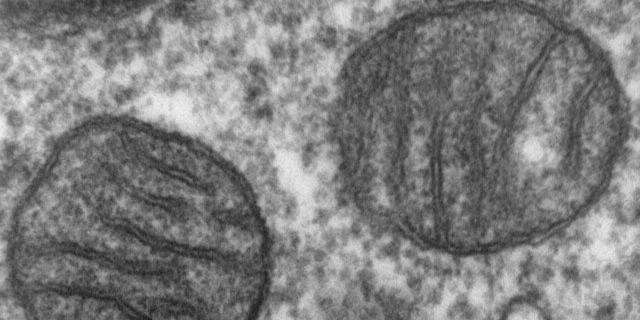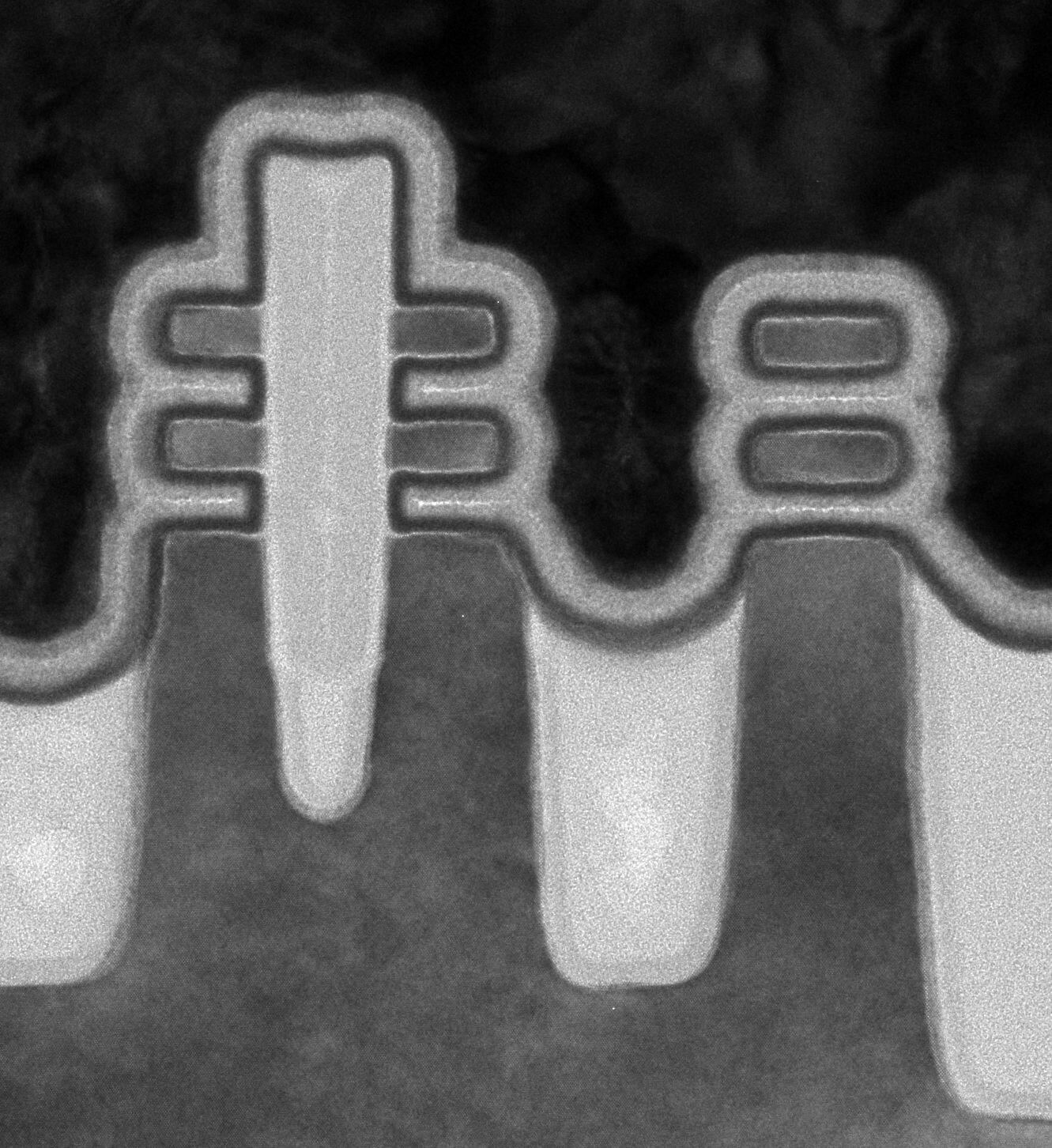#Mitochondrial DNA in cancer: Small genome, big impact

“#Mitochondrial DNA in cancer: Small genome, big impact”

Mitochondria are in vogue, with devotees ranging from exercise physiologists and sports scientists to molecular biologists and clinicians all coalescing around these unusual organelles.
Given their position as a metabolic and energetic hub, as well as their central role in controlling cell death, mitochondria are also an area of focus for many cancer scientists. However, one essential facet of mitochondrial biology in cancer has remained underexplored; mitochondrial DNA (mtDNA).
A physically and heritably distinct piece of DNA that is passed down the generations through the maternal line, mtDNA exists only inside mitochondria. Recent work from my lab at the Cancer Research UK Beatson Institute, in collaboration with scientists at the Memorial Sloan Kettering Cancer Center in the US led by Dr. Ed Reznik, has revealed the substantial impact mutations in mtDNA can have in cancer. Understanding this could offer up new indicators of disease prognosis and provide a new focus for future therapeutics.
Mitochondria—a trans-kingdom enigma
At the molecular level, the components of mammalian mitochondria are assembled from viruses, bacteria and eukaryotes. As such, the organelle we see in human cells today is a trans-kingdom mixture that doesn’t fully resemble any of its ancestors.
Human mtDNA is a small genome, only 16,569 base pairs long. In keeping with its bacterial ancestry, mtDNA is also circular and multicopy—with hundreds to thousands of copies present in every cell. mtDNA is very genetically compact and encodes only 13 proteins, all of which are core subunits of the oxidative phosphorylation (OXPHOS) complexes.
These OXPHOS complexes, found only within mitochondria, are unique in human biology as they are the only cellular structures formed of proteins encoded by genes from the two separate genomes. The nuclear DNA provides around 90% of the required proteins for OXPHOS, and the mtDNA provides the remaining 10%.
Mitochondria and disease: a charged history
Through the process of OXPHOS, an electrochemical gradient builds up in mitochondria, causing the inside of mitochondria to become negatively charged. This relative difference in charge is then harnessed by parts of the OXPHOS machinery to produce usable energetic molecules, however almost all other mitochondrial functions, unrelated to OXPHOS, also require this charged state to work. Without it, the precursors and products of reactions that occur in mitochondria begin to build up on the wrong sides of the mitochondrial membranes, unable to be transported as normal because of the electrochemical poise of the organelle. This results in various forms of metabolic dysfunction, which are the hallmark of rare mitochondrial diseases that occur when individuals are born with mutations in their mtDNA. Generally, these mutations result in a shift in metabolism towards greater utilization of glucose; a short-term biochemical solution to the underlying issue that often results in severe disease.
A new view of cancer?
Now, OXPHOS is not the only way to generate energy and building blocks for cells. A huge cancer research effort has gone into detailing the ways in which cancer cells can be rewired to survive and undergo rapid cell growth.
One of these metabolic changes is a much-discussed phenomenon known as the Warburg effect, where tumors generate large amounts of lactate by preferentially utilizing glucose as a fuel source, despite being in conditions where their mitochondria could pick up the slack. Otto Warburg, and many since, have suggested that the altered metabolism associated with this effect, and other forms of metabolic dysfunction, are a driver of cancer initiation and progression. However, consensus on this view has never been reached in the cancer research community and these metabolic changes are often seen as a consequence of cancer rather than a potential cause.
In light of recent developments, this view may need to evolve. While anecdotal evidence of mtDNA mutations arising in tumors has been around for nearly two decades, in the last five years or so several studies using large scale sequencing data concluded that roughly 60% of tumors bear mutations of mtDNA (1,2,3). While these studies lacked statistical power and clinical insight, such clear links between a highly abundant and plausible source of mitochondrial dysfunction and cancer had never been made previously. There was a growing temptation amongst some to view these tumors as isolated groups of cells with both cancer and severe mitochondrial disease.
In a paper recently published in Nature Metabolism, my lab and colleagues from Memorial Sloan Kettering Cancer Center, detail the patterns underlying mtDNA mutations, the impacts these mutations have on tumors and the clinical implications of this in colorectal cancer (CRC) patients. In agreement with previous studies, we found that around 60% of tumors contain one or more mtDNA mutations. We also found highly recurrent mutations occurring across all tumors at specific stretches of DNA where a single DNA base is repeated, known as a homopolymer. This is significant because recurrence is an indicator of selective pressure—it implies the mutation confers an advantage to the cancer.
We also calculated a comparative mutation rate for all known cancer-associated genes, which included mtDNA genes. Surprisingly, this led us to the conclusion that mtDNA genes are among the most mutated genes in all cancer, with 25 of the top 30 most mutated genes being encoded in mtDNA. While comparing mtDNA and nuclear DNA does have its limitations—a relative understanding of these mutations can give us a sense of context and proportion when considering cancer genetics. Additionally, we showed that the mutational burden in mtDNA is unrelated to the mutational burden in the nucleus. This is important, because nuclear DNA mutational burden in many tumors is associated with their response to, among other things, immune-targeted therapies. It’s easy to see how mitochondrial mutational status could be harnessed to better allocate such treatments, if not allow development of mitochondria-targeted immunotherapies which may have advantages over current immunotherapy targets. Intriguingly, we saw that the burden of mutations in mtDNA was spread unevenly across the OXPHOS complexes. This hints at how tumors might harness specific forms of mitochondrial dysfunction, while struggling to survive with others and could inform future therapeutic approaches.
Mutations confer survival benefit
The mutations we detected in mtDNA are not arising late in tumor development but are present in stage 1 tumors at a comparable rate to stage 3 tumors. They also cause a distinct change in the way the nuclear DNA of the tumor cell is expressed. Increases in nuclear encoded OXPHOS genes and decreases in genes associated with innate immunity have been linked with diverse mtDNA mutations across nearly all cancers studied. Importantly, we found a substantial survival benefit for CRC patients whose tumors bear mtDNA mutations, with a decreased risk of death of 57-93% for the majority of those in this category.
This potentially holds significant immediate implications for CRC patient care, however, it also raises many other questions: will this impact be seen in other cancers or just CRC? What are the precise differences between mtDNA mutant vs non-mutant cancer, beyond the mtDNA changes? Do some approaches to therapy for these patients work better or worse because of this? Beyond these specific, immediate questions, do mtDNA mutations actually cause or predispose cells to becoming cancerous, and how has this been missed for so long?
A lot of clinical and laboratory work needs to be done to address these. However, some issues are easier to address. For example, in what now seems to be a major misstep, mtDNA has been actively excluded from analysis of sequenced tumors as a matter of course, mostly owing to technical issues that arise when mtDNA is included in the data. This is an unfortunate but likely reason for their relevance to cancer being overlooked.
For much of the history of cancer research, and with good reason, scientists have focused heavily on nuclear DNA. These efforts have led to cancer being seen by many as a disease of the genome, an understanding that our recent discoveries suggest should be broadened. Cancer: no longer a disease of the genome, but a disease of the genomes.
Mutations in overlooked DNA could have profound impact on survival for bowel cancer patients
Young Seok Ju et al. Origins and functional consequences of somatic mitochondrial DNA mutations in human cancer, eLife (2014). DOI: 10.7554/eLife.02935
James B. Stewart et al. Simultaneous DNA and RNA Mapping of Somatic Mitochondrial Mutations across Diverse Human Cancers, PLOS Genetics (2015). DOI: 10.1371/journal.pgen.1005333
undefined undefined et al. Comprehensive molecular characterization of mitochondrial genomes in human cancers, Nature Genetics (2020). DOI: 10.1038/s41588-019-0557-x
Citation:
Mitochondrial DNA in cancer: Small genome, big impact (2021, May 5)
retrieved 5 May 2021
from https://medicalxpress.com/news/2021-05-mitochondrial-dna-cancer-small-genome.html
This document is subject to copyright. Apart from any fair dealing for the purpose of private study or research, no
part may be reproduced without the written permission. The content is provided for information purposes only.
If you liked the article, do not forget to share it with your friends. Follow us on Google News too, click on the star and choose us from your favorites.
For forums sites go to Forum.BuradaBiliyorum.Com
If you want to read more Like this articles, you can visit our Science category.



